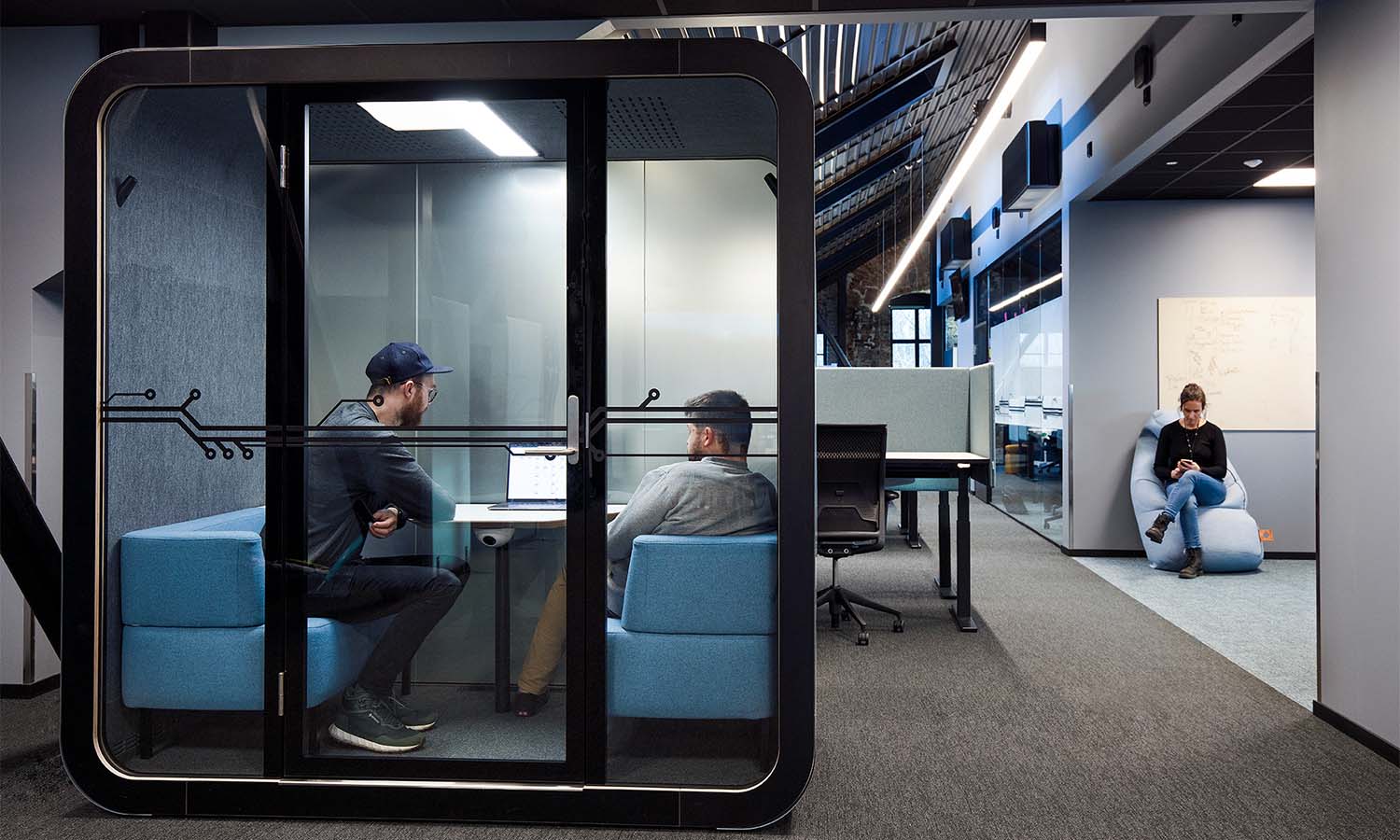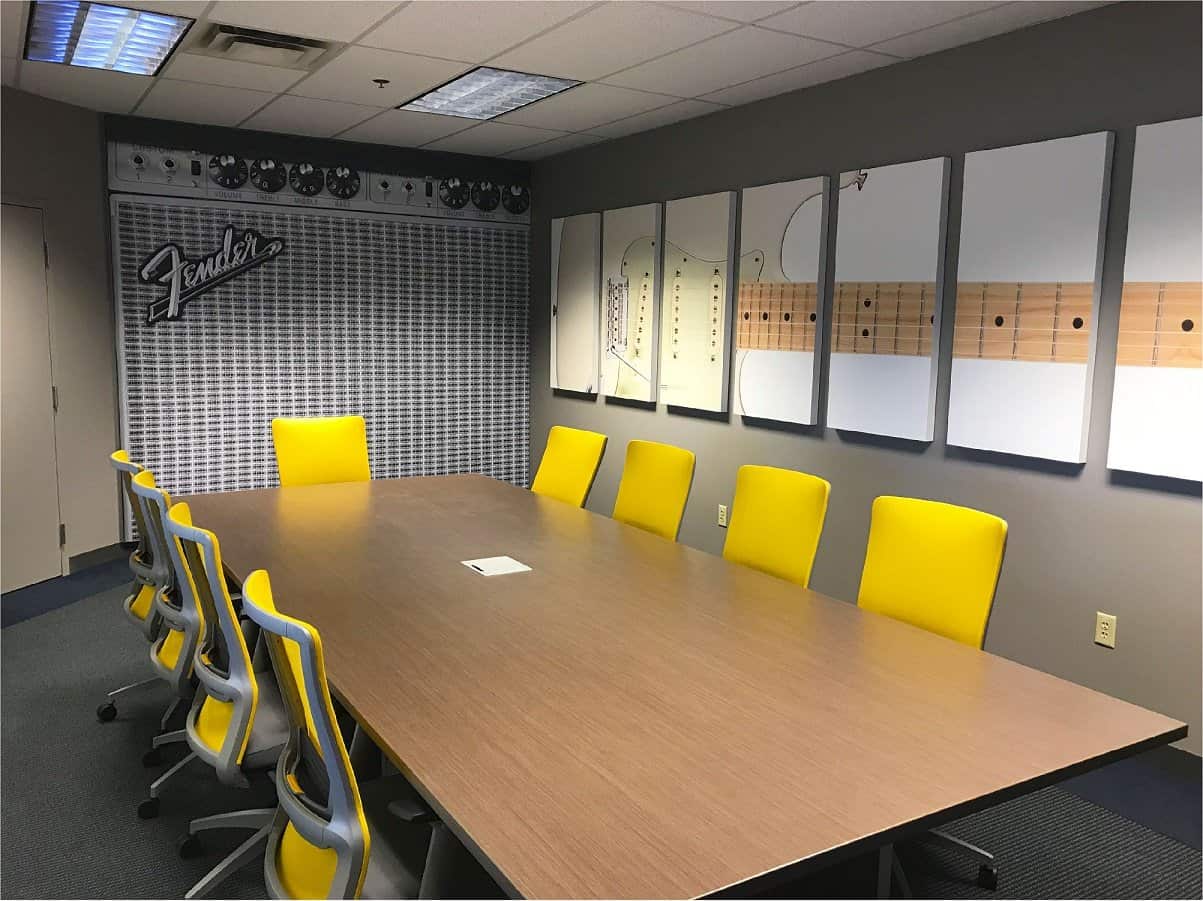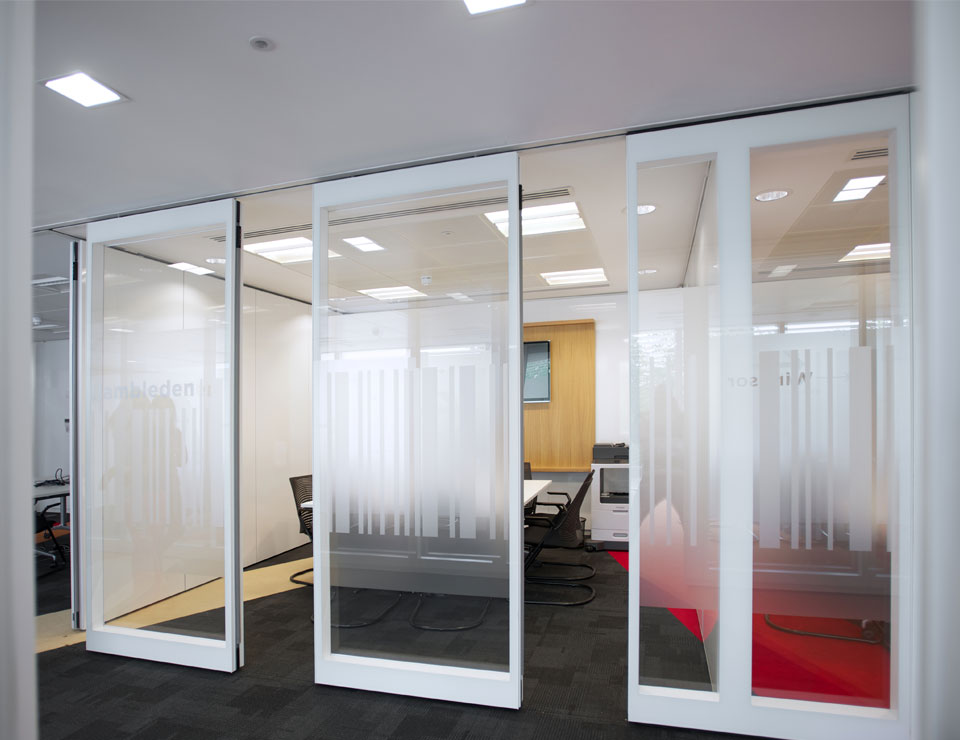Soundproofing an office can boost productivity and reduce stress. It’s crucial for creating a focused work environment.
Imagine working in an office free from noise distractions. No more loud conversations, ringing phones, or street noise invading your concentration. Soundproofing your office can make this dream a reality. Whether you work from home or in a bustling office, noise can be a major issue.
Effective soundproofing can help you maintain focus and improve your work quality. This guide will show you simple, practical steps to soundproof your office. Say goodbye to unwanted noise and hello to a peaceful workspace. Ready to get started? Let’s dive in and explore how to transform your office into a quiet haven.
Assessing Noise Levels
Soundproofing an office starts with understanding the noise levels. This step is crucial. It helps you identify the source of the problem. By assessing noise levels, you can create a more productive workspace. Let’s break it down into two main tasks: identifying noise sources and measuring noise levels.
Identifying Noise Sources
First, find out where the noise is coming from. Common sources include:
- External Noise: Traffic, construction, or street sounds.
- Internal Noise: Conversations, phones, or office equipment.
- Building Noise: HVAC systems, elevators, or plumbing.
List all these sources. This will help you target your soundproofing efforts. Note the times when noise is the highest. This can give clues about the source.
Measuring Noise Levels
Next, measure the noise levels. This tells you how loud the noise is. Use a decibel meter for this task. Many smartphone apps can also measure noise levels.
Follow these steps:
- Stand in the middle of the room.
- Turn on the decibel meter or app.
- Record the decibel level for a few minutes.
Do this at different times of the day. This helps you understand noise patterns. Record your findings in a table like this:
| Time | Location | Decibel Level |
|---|---|---|
| 9 AM | Main Office | 60 dB |
| 1 PM | Main Office | 65 dB |
| 4 PM | Main Office | 70 dB |
These steps help you understand your office noise better. With this data, you can plan your soundproofing strategies effectively.

Credit: framery.com
Soundproofing Materials
Soundproofing an office can greatly improve productivity and privacy. Choosing the right materials is crucial. In this section, we will explore some effective soundproofing materials. These include acoustic panels and soundproof curtains. Each has its own benefits and is easy to install.
Acoustic Panels
Acoustic panels are popular for soundproofing offices. They are designed to absorb sound waves. This reduces noise and improves sound quality. You can mount them on walls or ceilings. They come in various shapes, sizes, and colors. This makes it easy to match your office decor. Acoustic panels are made from materials like foam or fabric. They are lightweight and easy to install. You can cover large areas quickly.
Soundproof Curtains
Soundproof curtains are another great option. They help block out noise from outside. They are thicker than regular curtains. This helps in dampening sound. They also provide thermal insulation. This can help save on energy bills. Soundproof curtains are easy to install. You can hang them just like regular curtains. They come in various colors and styles. This allows you to maintain a stylish office look while reducing noise.
Structural Modifications
Structural modifications can significantly reduce noise in an office. These changes involve making physical adjustments to your office space. These methods are effective in blocking or absorbing sound.
Installing Insulation
Installing insulation is one of the most effective ways to soundproof an office. It helps to absorb sound and prevent it from traveling between rooms.
Consider the following types of insulation:
- Fiberglass Insulation: Affordable and easy to install.
- Foam Insulation: Offers high sound absorption.
- Rockwool Insulation: Fire-resistant and excellent for soundproofing.
To install insulation, follow these steps:
- Remove any existing wall panels.
- Measure the wall cavities.
- Cut the insulation to fit the spaces.
- Place the insulation into the cavities.
- Replace the wall panels.
Sealing Gaps And Cracks
Sealing gaps and cracks is crucial to prevent sound from leaking through small openings. Even the smallest gaps can let in unwanted noise.
Follow these steps to seal gaps and cracks:
- Inspect walls, windows, and doors for gaps.
- Use acoustic caulk to seal any gaps you find.
- Install weatherstripping around windows and doors.
- Check for gaps around electrical outlets and light switches.
- Use foam gaskets for outlets and switches.
These simple steps can make a big difference in reducing noise.

Credit: www.dgicommunications.com
Furniture And Layout
Creating a quiet office environment boosts productivity and focus. One key aspect of soundproofing your office is the furniture and layout. This section will guide you on how to use furniture and optimize your office layout to reduce noise effectively.
Sound Absorbing Furniture
Invest in sound absorbing furniture to minimize noise. These items are designed to dampen sound waves and reduce echo.
- Acoustic panels
- Heavy curtains
- Thick rugs or carpets
- Bookshelves filled with books
Acoustic panels are great for walls and ceilings. Heavy curtains can block external noise from windows. Thick rugs or carpets absorb sound from footsteps and other activities. Bookshelves filled with books act as sound barriers, especially when placed against walls.
Optimizing Office Layout
Arrange your furniture to create a quieter space. The layout of your office can significantly impact the level of noise.
- Position desks away from noise sources
- Use partitions to separate workspaces
- Place large furniture against shared walls
- Ensure proper spacing between desks
Desks should be placed away from doors, windows, and other noisy areas. Partitions help to create private, quiet zones. Large furniture like cabinets and bookshelves against shared walls can block and absorb sound. Proper spacing between desks prevents noise from spreading.
Here’s a simple table to visualize the ideal furniture placement:
| Furniture | Placement | Benefit |
|---|---|---|
| Desks | Away from noise sources | Reduces direct noise |
| Partitions | Between workspaces | Creates quiet zones |
| Bookshelves | Against walls | Absorbs sound |
| Rugs/Carpets | Floor | Reduces footstep noise |
Implementing these tips can make your office quieter and more conducive to work.
Electronic Solutions
Soundproofing an office can sometimes be quite a task. But electronic solutions offer a convenient and effective way to reduce noise. Let’s explore two popular options: white noise machines and noise-canceling devices.
White Noise Machines
White noise machines are small, portable devices. They produce sounds that mask background noise. This can help create a calmer work environment.
Here are some benefits of using white noise machines:
- Block out distracting sounds
- Improve focus and productivity
- Easy to set up and use
Consider placing a white noise machine on your desk. It can help drown out conversations and other office noises.
Noise-canceling Devices
Noise-canceling devices, like headphones, are another great option. They use technology to block out unwanted sounds. This can make your office much quieter.
Benefits of noise-canceling devices include:
- Reduce ambient noise
- Enhance concentration
- Portable and comfortable
Noise-canceling headphones are especially useful. They can help you stay focused on your work without distractions.

Credit: www.avantisystemsusa.com
Diy Soundproofing Tips
Do you struggle with noise in your office? DIY soundproofing can help. With some basic tips, you can create a quieter workspace. These methods are easy and cost-effective. Let’s dive into some practical solutions.
Quick Fixes
Need a fast solution? Try these quick fixes for immediate relief:
- Rugs and Carpets: Place rugs on the floor. They absorb sound and reduce echoes.
- Door Sweeps: Install door sweeps to block noise from entering under the door.
- Weatherstripping: Seal gaps around windows and doors with weatherstripping.
Budget-friendly Options
Looking for cheap solutions? These budget-friendly tips can help:
- Foam Panels: Attach foam panels to walls. They are inexpensive and effective.
- Thick Curtains: Hang thick curtains over windows. They block outside noise.
- Bookshelves: Place bookshelves against walls. They add mass and absorb sound.
Here’s a table summarizing these budget-friendly options:
| Option | Benefit | Cost |
|---|---|---|
| Foam Panels | Absorbs sound | Low |
| Thick Curtains | Blocks noise | Low |
| Bookshelves | Absorbs sound | Low |
Professional Assistance
Sometimes, soundproofing your office requires more than just DIY methods. Professional assistance ensures you get the best results. Experts have the right tools and experience. They can offer tailored solutions for your specific needs.
When To Hire Experts
You should consider hiring experts when:
- Sound issues are severe.
- DIY methods fail to work.
- You need quick and effective results.
- The office space is large or complex.
Experts can assess your office and recommend the best materials. They can also install these materials properly, ensuring long-term sound reduction.
Choosing The Right Service
To choose the right service, consider the following:
- Experience: Look for a service with years of experience in soundproofing.
- Reviews: Check online reviews and testimonials from past clients.
- Services Offered: Make sure they offer the specific services you need.
- Cost: Get quotes from multiple providers and compare prices.
Here is a comparison table to help you make a decision:
| Service Provider | Experience | Reviews | Services Offered | Cost |
|---|---|---|---|---|
| Provider A | 10 years | 4.5 stars | Full soundproofing | $$$ |
| Provider B | 7 years | 4 stars | Basic soundproofing | $$ |
| Provider C | 5 years | 3.5 stars | Consultation only | $ |
Choosing the right professional service can make a big difference. It ensures your office is quiet and comfortable, boosting productivity and focus.
Maintaining A Quiet Office
Maintaining a quiet office is essential for productivity and focus. Noise can disrupt workflow and cause stress. By following some simple guidelines, you can create a peaceful work environment.
Routine Checks
Regularly inspect the office for sources of noise. Check windows and doors for gaps. Ensure they close tightly. Examine walls and ceilings for any cracks. Seal any openings to prevent sound from entering.
Test office equipment for noise levels. Identify noisy printers or computers. Consider moving them to a separate room. Maintain HVAC systems to keep them running quietly. Replace noisy parts immediately.
Employee Guidelines
Set clear guidelines for noise levels. Encourage employees to speak softly. Use headphones for phone calls or video meetings. Establish quiet zones for focused work.
Promote the use of soft furnishings. Carpets, curtains, and cushions can absorb sound. Arrange furniture to minimize noise. Place bookshelves or plants against walls to reduce echoes.
Encourage breaks in designated areas. Create spaces for socializing away from workstations. This helps maintain a calm atmosphere in the main office area.
Frequently Asked Questions
How Can I Soundproof My Office Cheaply?
You can soundproof your office cheaply by using thick rugs, curtains, and door sweeps. Adding bookshelves filled with books can also help. Sealing gaps with weatherstripping tape is another cost-effective method.
What Materials Are Best For Soundproofing?
The best materials for soundproofing include acoustic panels, foam tiles, and mass-loaded vinyl. Thick carpets and curtains also work well. These materials absorb and block sound effectively.
How Effective Are Soundproof Curtains?
Soundproof curtains are quite effective at reducing noise. They are made of dense materials that absorb sound. They can significantly reduce outside noise, making your office quieter.
Can Plants Help With Office Soundproofing?
Yes, plants can help with office soundproofing. They absorb sound, reducing noise levels. Larger, leafy plants are particularly effective. They also improve air quality and add aesthetic value.
Conclusion
Creating a soundproof office can boost productivity and focus. Use simple solutions like rugs and curtains. Invest in acoustic panels for better results. Seal gaps around doors and windows. Rearrange furniture to absorb noise. Try white noise machines for added peace.
These steps make a big difference. Enjoy a quieter, more productive workspace. Soundproofing doesn’t have to be expensive or complicated. Small changes create a more peaceful environment. Start today and notice the improvement. Your office can become a haven of quiet and focus.
Happy soundproofing!

